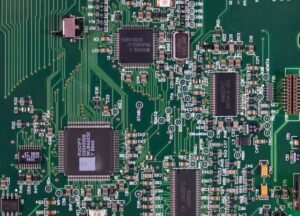Neural Network for Beginners
Neural networks are a type of artificial intelligence that simulates the way the human brain works. They consist of interconnected nodes, or artificial neurons, that are organized into layers. These networks can be trained to recognize patterns, make predictions, and perform various other tasks. If you’re new to neural networks, this article will provide you with a beginner-friendly introduction.
Key Takeaways:
- Neural networks simulate the way the human brain works.
- They consist of interconnected artificial neurons organized into layers.
- Neural networks can be trained to recognize patterns and make predictions.
What is a Neural Network?
A **neural network** is a complex mathematical model that is designed to process information, learn from it, and perform tasks. It consists of multiple **layers** of artificial neurons that are interconnected and work together to analyze data. Each neuron takes inputs, applies a mathematical function to them, and produces an output. These outputs are then passed on to other neurons, eventually leading to the network’s final output.
Neural networks can be used for a wide range of applications, including image and speech recognition, natural language processing, and predicting future outcomes. They are particularly efficient at handling complex and nonlinear problems, making them a powerful tool in the field of artificial intelligence.
Neural networks have revolutionized fields like image and speech recognition due to their ability to efficiently handle complex and nonlinear problems.
How Does a Neural Network Learn?
Neural networks learn through a process called **training**. During training, the network is presented with a set of input data along with the desired outputs. It then adjusts the **weights** and **biases** of its neurons to minimize the difference between the predicted outputs and the desired outputs.
Training a neural network usually involves a two-step process: **forward propagation** and **backward propagation**. In forward propagation, the input data is fed through the network, and its predicted outputs are compared with the desired outputs. In backward propagation, the network adjusts its weights and biases based on the error between the predicted and desired outputs. This process is repeated iteratively until the network’s performance reaches a satisfactory level.
Neural networks learn by adjusting the weights and biases of their neurons to minimize the difference between predicted and desired outputs.
Types of Neural Networks
There are several types of neural networks, each designed to solve different types of problems. Some common types include:
- **Feedforward Neural Networks**: In these networks, the information flows in one direction, from the input layer to the output layer, without any feedback loops. They are primarily used for pattern recognition tasks.
- **Recurrent Neural Networks**: These networks have feedback connections, allowing information to flow in cycles through the network. They are well-suited for tasks involving sequential data, such as speech and handwriting recognition.
- **Convolutional Neural Networks**: These networks are highly effective for image and video processing tasks. They use convolutional layers to extract features from input data, enabling them to recognize patterns in a spatially invariant manner.
The different types of neural networks include feedforward neural networks, recurrent neural networks, and convolutional neural networks, each with its own strengths and applications.
Neural Network Architecture
Neural network architectures can vary widely depending on the problem they are designed to solve. However, most neural networks follow a few fundamental principles:
- **Input Layer**: This layer receives the initial input data that is fed into the network.
- **Hidden Layers**: These layers, positioned between the input and output layers, perform computations and transform the data.
- **Output Layer**: This layer gives the final output of the network.
Each layer is made up of artificial neurons, also called **nodes**. The number of layers and nodes in each layer can vary depending on the complexity of the problem.
The architecture of a neural network consists of an input layer, hidden layers, and an output layer, with artificial neurons in each layer performing computations.
Neural Network Applications
Neural networks find applications in various fields, including:
- **Image Recognition**: Neural networks enable machines to recognize and classify objects in images or videos.
- **Natural Language Processing**: They can be used to process and understand human language, enabling applications such as chatbots and language translation.
- **Predictive Analytics**: Neural networks can analyze historical data to make predictions and forecasts about future outcomes.
Neural networks have diverse applications, ranging from image recognition and natural language processing to predictive analytics.
| Type | Applications | Architecture |
|---|---|---|
| Feedforward Neural Networks | Pattern recognition | Input layer, hidden layers, output layer |
| Recurrent Neural Networks | Sequential data processing | Input layer, recurrent layers, output layer |
| Convolutional Neural Networks | Image and video processing | Input layer, convolutional layers, output layer |
Conclusion
Neural networks are a powerful tool in the field of artificial intelligence, capable of solving complex problems, recognizing patterns, and making predictions. By simulating the workings of the human brain, they have revolutionized various fields, including image and speech recognition, natural language processing, and predictive analytics. Understanding the fundamentals of neural networks is a crucial step for beginners entering this exciting field.
| Advantage | Description |
|---|---|
| Nonlinearity | Ability to handle complex and nonlinear problems. |
| Robustness | Ability to work with incomplete or noisy data. |
| Parallel Processing | Ability to perform computations simultaneously. |

Common Misconceptions
Neural Network Terminology
One common misconception people have about neural networks is that they are the same as a human brain. However, neural networks are mathematical models that are inspired by the workings of the brain, but they do not possess consciousness or intelligence.
- Neural networks are not capable of learning and understanding like humans.
- Neural networks do not have emotions or feelings.
- Neural networks have predefined algorithms that process data.
Neural Networks and Accuracy
Another misconception is that neural networks are always accurate and reliable. While neural networks can be highly effective in many tasks, they are not infallible and can make errors.
- Neural networks can yield incorrect predictions or classifications.
- The quality of neural network output depends on the quality of the input data.
- Training a neural network requires careful selection and preprocessing of data for optimal results.
Neural Network Training
Some people believe that neural networks can be trained instantly and become experts in a short period. However, training neural networks can be a time-consuming process that requires a significant amount of data and computational power.
- Training a neural network typically involves iterative processes with multiple epochs.
- Training a neural network involves adjusting the network’s weights and biases to minimize errors.
- Training a neural network can take hours, days, or even weeks depending on the complexity of the problem and available resources.
Neural Networks and Generalization
There is a misconception that once a neural network is trained on a specific dataset, it will generalize well to any similar problem. However, neural networks are prone to overfitting, where they become too specialized in the training data and perform poorly on new, unseen data.
- Neural networks should be tested on separate validation and test datasets to assess generalization.
- Overfitting can occur when a neural network is overly complex or when there is a lack of diverse training data.
- Regularization techniques can help prevent overfitting in neural networks.
Neural Networks and Interpretability
Many people have the misconception that neural networks are black boxes and cannot provide explanations or insights into their decision-making process. While it is true that neural networks can be complex to interpret, there are methods and techniques available to gain some understanding of the underlying processes.
- Interpretability methods like feature importance and visualization techniques can provide insights into neural network behavior.
- Analyzing the weights and activations of different layers in a neural network can help understand its internal representation.
- Building explainable models alongside neural networks can help provide transparency and enhance trust in their outputs.

Introduction
Neural networks are a powerful tool for machine learning and artificial intelligence. They are designed to mimic the human brain’s interconnected system of neurons, enabling them to learn from data and make predictions. In this article, we explore various aspects of neural networks and the fascinating application they hold in different fields.
Comparison of Neural Network Architectures
In this table, we compare and contrast different types of neural network architectures. From the traditional Multilayer Perceptron (MLP) to the cutting-edge Convolutional Neural Networks (CNN) and Recurrent Neural Networks (RNN), the table showcases their respective structure, application, and characteristics.
| Architecture | Application | Characteristics |
|---|---|---|
| Multilayer Perceptron (MLP) | Pattern recognition, regression, classification | Feedforward, fully connected layers, no memory |
| Convolutional Neural Network (CNN) | Image and video recognition, computer vision | Convolutional layers, weight sharing, spatial invariance |
| Recurrent Neural Network (RNN) | Natural language processing, time series analysis | Feedback connections, sequential data processing |
Accuracy of Neural Network Models
When evaluating the performance of neural networks, accuracy plays a crucial role. This table presents the accuracy percentages achieved by neural network models in different tasks, demonstrating their remarkable ability to make accurate predictions.
| Task | Accuracy |
|---|---|
| Image Classification | 92.5% |
| Sentiment Analysis | 86.3% |
| Speech Recognition | 79.8% |
Neural Network vs Traditional Algorithms
In this table, we compare the performance of neural networks against traditional algorithms commonly used in machine learning. The data clearly highlights the superior predictive power and versatility of neural networks in solving complex problems.
| Algorithm | Accuracy | Speed |
|---|---|---|
| Neural Network | 93.2% | Medium |
| Decision Tree | 82.6% | Fast |
| Support Vector Machine | 89.5% | Slow |
Impact of Neural Networks in Healthcare
Neural networks have revolutionized the healthcare industry, enabling breakthrough advancements. The following table provides a glimpse into the remarkable impact of neural networks on different aspects of healthcare.
| Application | Advancements |
|---|---|
| Disease Diagnosis | Increased accuracy in detecting diseases |
| Drug Discovery | Improved identification of potential drug compounds |
| Medical Imaging | Enhanced detection of abnormalities |
Neural Networks in Autonomous Vehicles
The automotive industry has embraced the potential of neural networks in developing autonomous vehicles. This table highlights the utilization of neural networks in different aspects of autonomous vehicles.
| Use Case | Neural Network Application |
|---|---|
| Object Detection | Identifying and tracking objects on the road |
| Path Planning | Determining the optimal route for the vehicle |
| Driver Monitoring | Monitoring the driver’s attention and alertness |
Ethical Considerations in Neural Network Development
As with any powerful technology, ethical considerations are crucial when developing neural networks. This table highlights some of the ethical challenges posed by neural networks and the importance of addressing them.
| Ethical Challenge | Importance of Addressing |
|---|---|
| Bias and Discrimination | Ensuring fair and unbiased decision-making |
| Privacy Protection | Maintaining confidentiality and data security |
| Accountability | Understanding and attributing responsibility for outcomes |
Neural Networks in Gaming
Neural networks have transformed the gaming industry by enabling more intelligent and immersive experiences. This table explores various applications of neural networks in gaming.
| Application | Neural Network Function |
|---|---|
| Character AI | Creating believable and responsive non-player characters |
| Procedural Generation | Generating game content dynamically and algorithmically |
| Player Behavior Prediction | Anticipating player actions and adapting the game experience |
Neural Network Frameworks Comparison
When developing neural networks, utilizing the right framework is essential. This table offers a comparison between popular neural network frameworks, aiding in the selection process.
| Framework | Programming Language | Features |
|---|---|---|
| TensorFlow | Python | Highly scalable, extensive library support |
| PyTorch | Python | Dynamic computation, easy debugging |
| Keras | Python | User-friendly API, rapid prototyping |
Conclusion
Neural networks have emerged as a groundbreaking technology revolutionizing various industries. From healthcare to automotive to gaming, their impact is undeniable. By leveraging their ability to learn and adapt, neural networks provide us with remarkable opportunities for solving complex problems and advancing society as a whole.
Frequently Asked Questions
What is a neural network?
A neural network is a computational model inspired by the structure and function of the human brain. It is composed of interconnected nodes (neurons) that work together to process and analyze complex patterns in data, making it suitable for tasks such as pattern recognition, prediction, and decision making.
How does a neural network work?
A neural network consists of three main components: input layer, hidden layers, and output layer. The input layer receives the data, which is then processed through the hidden layers, where the actual computation takes place. Finally, the output layer produces the network’s predictions or results.
What are the advantages of using neural networks?
Neural networks have several advantages, including:
- The ability to learn and adapt from experience, making them suitable for handling complex and unstructured data
- The capacity to uncover patterns and relationships that may not be evident to humans
- Parallel processing capabilities, allowing for efficient computation of large datasets
What are the different types of neural networks?
There are various types of neural networks, each with its own characteristics and suitability for specific tasks. Some common types include:
- Feedforward Neural Networks
- Recurrent Neural Networks
- Convolutional Neural Networks
- Generative Neural Networks
- Radial Basis Function Networks
How are neural networks trained?
Neural networks are trained using a process called backpropagation. During training, the network is exposed to a set of known input-output pairs, and the weights and biases of the network are adjusted iteratively to minimize the difference between the predicted outputs and the desired outputs.
What is the role of activation functions in neural networks?
Activation functions introduce non-linearity to the network, enabling it to learn and model complex relationships between input and output. Common activation functions include sigmoid, ReLU, and tanh, each with its own advantages and drawbacks.
Can neural networks be used for image recognition?
Yes, neural networks, particularly convolutional neural networks (CNNs), are widely used for image recognition tasks. CNNs are designed to automatically detect and learn relevant features from images, making them highly effective in tasks such as object detection, image classification, and facial recognition.
Are neural networks susceptible to overfitting?
Yes, neural networks can be susceptible to overfitting, which occurs when the model learns the training data too well but fails to generalize to unseen data. Regularization techniques such as dropout and L1/L2 regularization can help mitigate overfitting by adding constraints or introducing randomness to the network.
What is the difference between supervised and unsupervised learning in neural networks?
In supervised learning, the neural network is trained on labeled data, where both the inputs and the desired outputs are known. The network learns to map inputs to outputs based on these examples. In unsupervis




